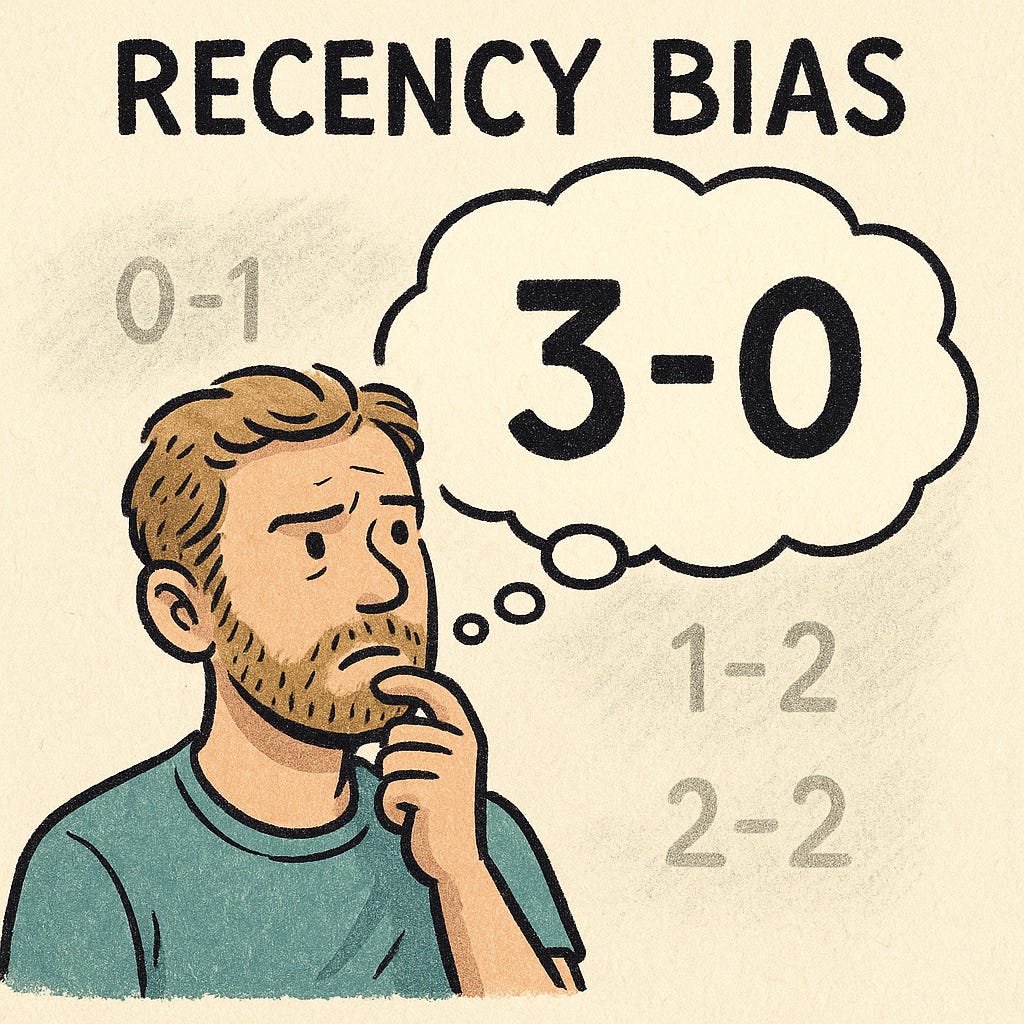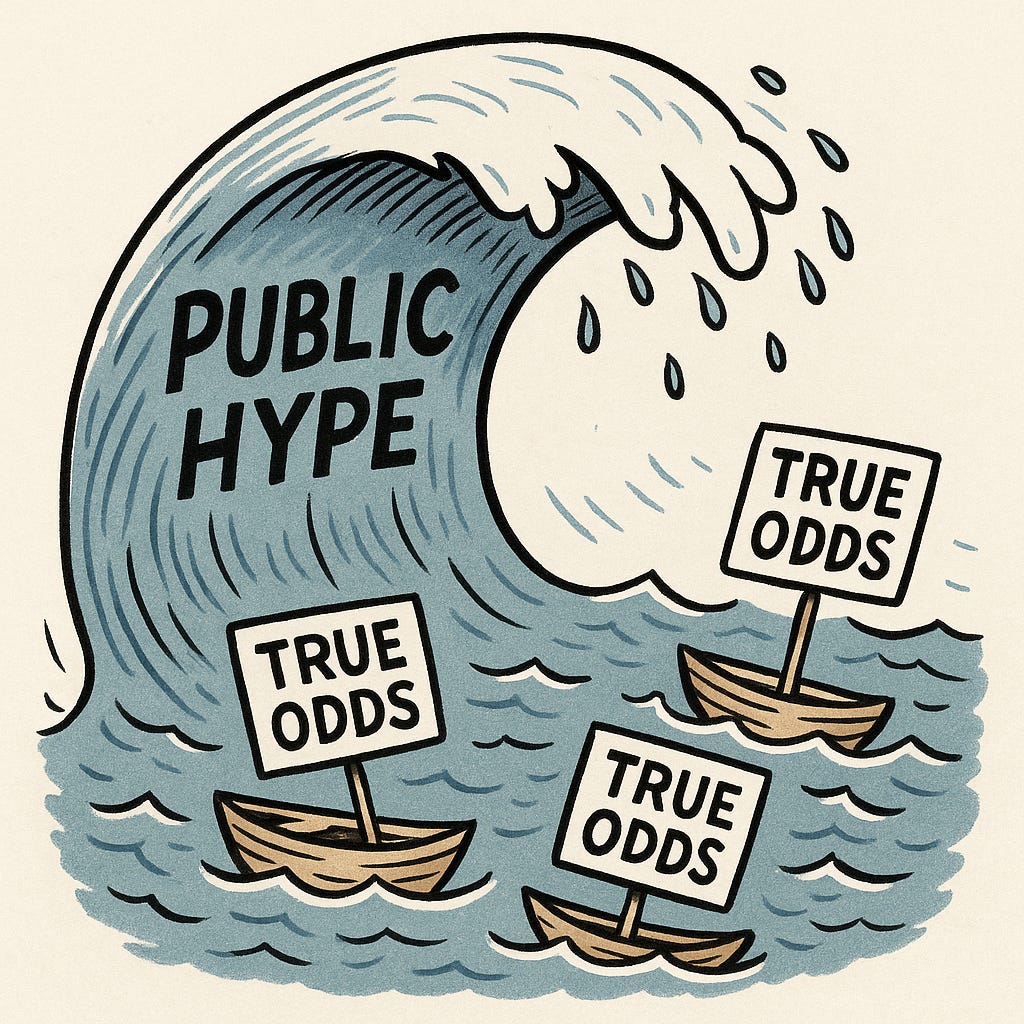How Bookmakers Really Make the Odds (And How You Can Too)
Why learning to price matches yourself changes everything
Why do odds always seem "about right"?
Ever look at a football match price and think “That’s pretty much what I expected”?
That is no coincidence. Bookmakers have decades of practice, models, and adjustments behind every number you see. But here is the secret: you do not need a trading desk or a supercomputer to understand how those numbers are built. You can build a system of your own and spot when the market gets it wrong.
Learn Percentages, Not Prices
Before you even think about who is value, you need to understand what odds mean.
2.00 (evens) equals 50% chance
2.50 (+150) equals 40% chance
1.50 (-200) equals 67% chance
4.00 (+300) equals 25% chance
Once you can instantly convert odds to percentages, you will see betting markets as probability puzzles instead of random numbers.
The Pointing System Explained
Bookmakers (and serious bettors) use ratings to simplify the messy world of football into numbers. Think of it as a “power score” system.
Here is how it works:
Assign a base score to the best team. Start with 100 or with 0. Either works as long as you are consistent.
Downgrade weaker teams by fractions of a goal. A common rule is 0.1 of a goal per “step down” in quality.
Apply home advantage. Across football, home advantage has fallen over the years but is still worth about 0.3 of a goal.
Example
Liverpool rated 100
Arsenal rated 99.8
Chelsea rated 99.5
Newcastle rated 99.4
If Arsenal host Newcastle, start them equal on a neutral pitch, then add 0.3 goals for Arsenal’s home field. That shifts Arsenal into the favourite role.
What is an Elo Rating?
The pointing system above is essentially a simplified version of Elo ratings, a method originally developed for chess but now widely used in sports.
How Elo works
Every team starts with a base rating (often 1500 points).
After each match, the winner takes points from the loser.
The number of points transferred depends on how unexpected the result was.
Heavy favourite wins = small shift.
Underdog wins = big swing.
Over time, Elo captures the true relative strength of each team better than league tables because it reacts continuously.
Converting Ratings Into Odds
Once you have ratings, you can turn them into actual prices.
Equal teams on neutral ground = 36% + 36% + 28% (draw).
Apply home advantage. The home side moves up to about 43% and the away side falls to 31%.
Convert those percentages back into odds. For example, 43% = 2.30 (about +130).
This way, every fixture has a starting price before you even look at the bookmaker’s board.
Where Bookmakers and Bettors Go Wrong
The pointing system and Elo give you a foundation, but matches are not played on spreadsheets. Biases creep in.
Recency bias. A team wins 4–0 and the public piles in next game
Injury bias. A star player out can move odds more than he deserves
Scheduling bias. Clubs with midweek European games often underperform at the weekend
Fashion bias. A glamorous London club may be overpriced compared with an unfashionable northern side
Recognising when the market overreacts to these factors is where bettors find value.
Use Weekly Matches to Fix Futures
One professional approach is to assume weekly match odds are very efficient, then use them to expose errors in futures markets.
Example:
Newcastle and Tottenham both around 51.00 to win the league
In Top 4 betting, Newcastle are 2.75 while Spurs are 6.00
That gap suggests something is off. Weekly matches treat them as equals, but the futures market does not.
Update Ratings Every Week
A rating system is not a set-and-forget model.
Teams sell players, change managers, or shift style
Injury runs can alter expected goal output
Goal averages across a league can rise or fall, changing the fair price for draws
The best bettors adjust ratings continuously. If you are just copying last season’s numbers, you will always be a step behind.
Practical Exercise You Can Try
Take this weekend’s Premier League fixtures
Look up each team’s current Elo rating on ClubElo
Write down what you think the fair prices should be using those ratings
Compare your numbers with the bookmaker’s odds
Circle the games where your “true” price is furthest away
Ask: is it market bias or are you missing key information?
Over time, this practice sharpens your instincts. You stop reacting to bookmaker prices and start making your own.
🎯 The Bottom Line
Pricing games is not magic. It is a mix of:
Converting odds to percentages
Building ratings with a pointing or Elo system
Adjusting for home advantage and weekly changes
Exploiting bias and futures inefficiencies
Once you learn the bookmaker’s playbook, you will stop betting on hunches and start betting with structure.




